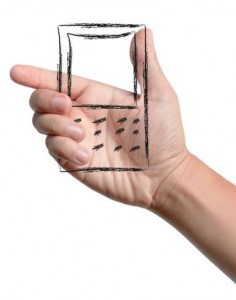As most 3PL providers and actually, most supply chain business leaders would agree, customer service/satisfaction has become the great differentiator, separating successful enterprises from the “Also rans”.
Those same people will also tell you that measuring customer service performance is an essential yet complicated exercise. Essential because customer service measurement shows you where your organization needs to improve: complicated because of the somewhat intangible elements that make the largest contributions to the customer experience.
OTIF is Not a Customer Service KPI
For many organisations, measuring customer service extends as far as tracking OTIF (On Time and In Full) metrics and little more. However those companies are missing out on opportunities to understand how close their service comes to giving customers what they want.
Sure; OTIF tells you how many of your customer orders are completely fulfilled, but that’s a basic requirement for supply chain customers—it doesn’t exemplify a differentiating standard of customer service. To maintain visibility of how well you serve your customers, you need measurements into which customers actually have some input. This of course, is where the complexity comes in.
Moving toward True Customer-service Measurement
So what are the elements that must be measured to understand customer service performance? To some extent, it depends on what your customers consider important. However, a few examples of these elements can include:
- Time taken to answer phone calls from customers
- Flexibility of the service provision
- Engagement of customer service personnel
- Query resolution times
There are many more ways in which you might measure customer service, but hopefully the examples above illustrate the issue—which is how to gather the information to generate a measurement.
Technology Holds the Key
Essentially, to capture meaningful information that truly relates to customer service, you need some way to gather information directly from your customers. Fortunately, the technology to make this task fast, simple and convenient for customers is becoming more accessible and less expensive.
For example, customer relationship management (CRM) software, coupled to mobile devices, allows your delivery drivers to record completed deliveries in real-time. A few minutes later, your CRM platform can make an automated phone call to the customer, requesting service feedback via two or three simple survey questions.
With real-time data capture, your company can get customer service feedback, straight from the horse’s mouth, in a timely manner. This data can then be converted into a score, providing a trackable metric to show you what your customers really think of your service provision.
Of course, while this type of technology requires some investment, the value of CRM and enterprise mobility solutions extend way beyond capturing data for measuring customer service. On the other hand, there are other, less pricey solutions for gathering customer feedback and building service metrics.
The important takeaway here is that relying solely on OTIF for measuring customer service will show you only a small part of the picture. Meanwhile, competitors that canvas regular customer feedback will likely be the ones differentiating themselves from your business.

